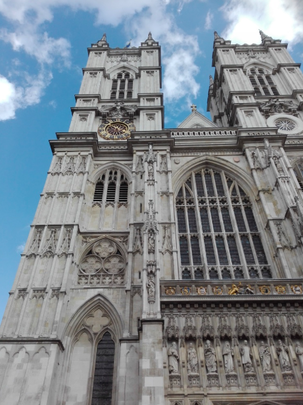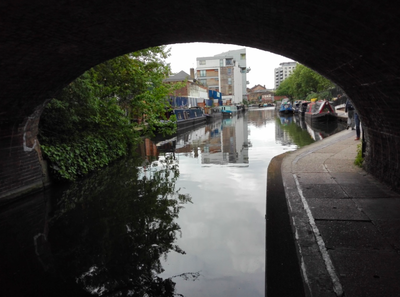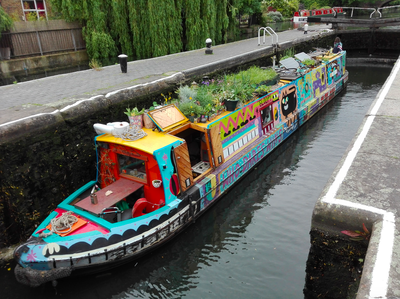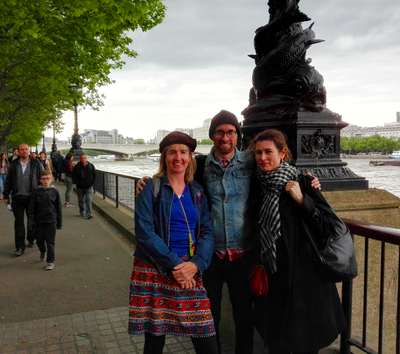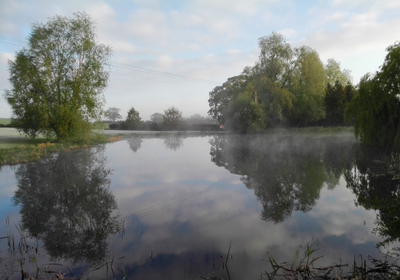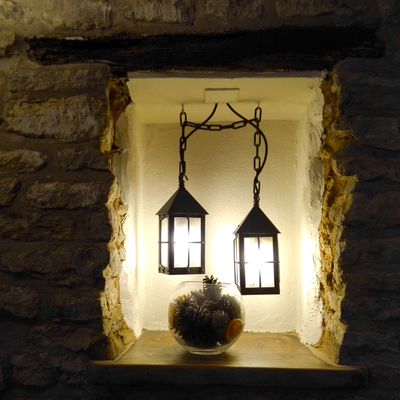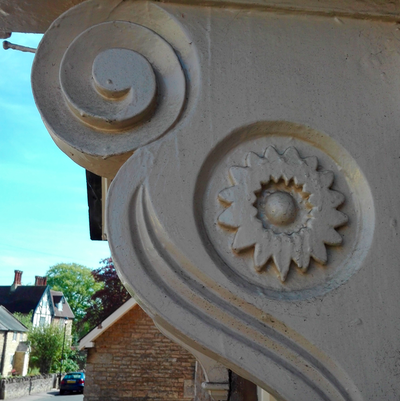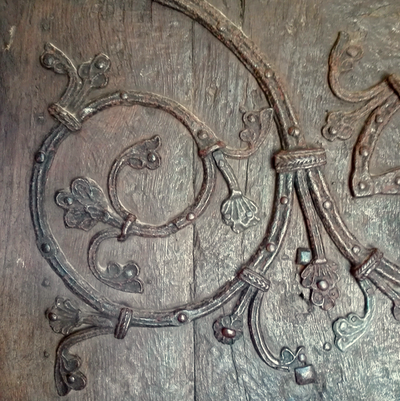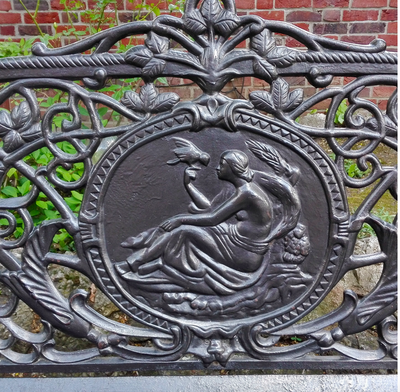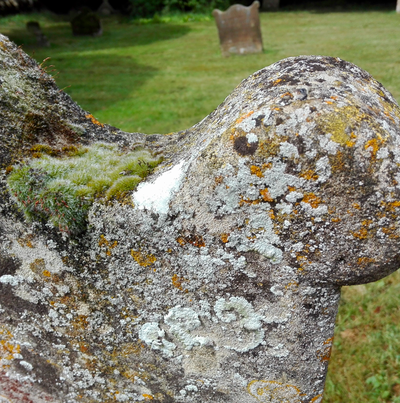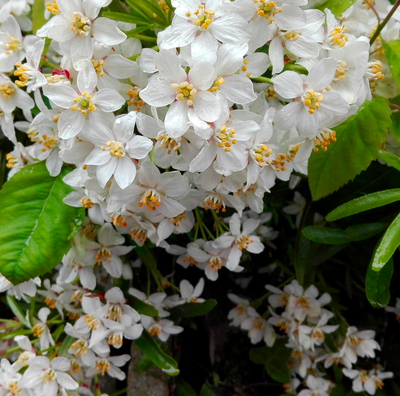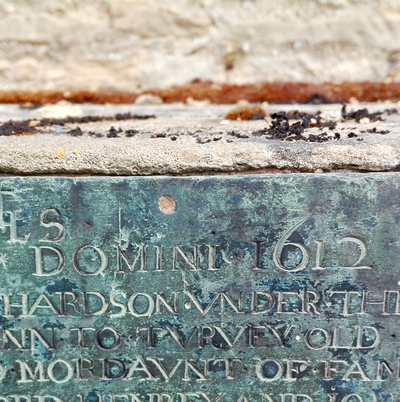England
London
Palmers Lodge Swiss Cottage
This is the cool backpackers we stayed at:
This is the cool backpackers we stayed at:
|
Sunday 14 May
London Worship I made sure while booking that we had a whole Sunday in London, and we certainly made the most of it. Three churches, three worship services, three completely different styles, traditions, theologies and communities, despite all three being Anglican, and all three worshiping in very traditional old church buildings. Each one was superb in its own frame. Each one has global connections and influence. 1. Holy Trinity Brompton. I’ve been wanting to go to ‘HTB’ for years, ever since I’ve been part of the New Wine community. We were not disappointed. It was awesome!! As Ben describes it, “You could feel the Spirit of God within 5 minutes. It was emotion, from the heart.” We are familiar with the HTB-New Wine worship format: intro, 3 worship songs drawing heat and movement, a speaker who also reads the scripture, a call to response, the offer of prayer ministry, more music to create space for prayer at the end. Very simple format, with high tech stage rig (the glorious ancient stained glass is now all but covered over with screen & coloured light strips). Very professional, superb preaching. Very accessible, speaking about and into people’s everyday lives, to non-believers and to established Christians. Very warm, relational, informal dress (denim shirts seemed to be the dress code), practical, personal, lively. The church was literally packed to the rafters. HTB’s global impact has been vast, especially through Alpha in all its versions. Mind bogglingly enormous. A huge factor in churches defying decline in every nation. 2. Westminster Abbey. It certainly is an experience to enter this church. It might not be the biggest church in the world this was a church built to be the centre of the world, the heart of empire, the seat of power both religious and secular. No other building represents (for us children of the British Empire anyway) the merged glory of God and Man, wealth and status and national identity infused with the divine. This is the site of the King of Kings, where stone has been stretched as high as high can be, into arches of light lifting up so that light falls around altar and throne. We went to Evensong, at 3pm, and the seating was full, tourists like us mostly. Ben was unimpressed. He has no time for prayers said just the same last week as this week as last century, they move him not a jot. I struggled with the ‘thees’ and ‘thous’, not used to them! It’s a strange building to sit in, because it’s all so screened off with different sections not in relationship with each other. It’s a strange church to move in because it is so highly policed, with men in red robes tightly directing, forbidding photos, looking stern. Then into that ultimate formality up steps a young black woman to preach, short and spunky, hair plaited tight to her scalp, one Venerable Elizabeth, speaking of death and life, her voice well practiced in speaking into that vast echoing space. I could hardly believe it, what a curious juxtaposition of cultural change and cultural intransigence. (What even is a ‘venerable’? – that’s different from being a Canon?) 3. St James Piccadilli, Gospel service. 5.30pm saw Ben and I sitting on the steps at St James, just along from The Ritz, eating most delicious sticky substances from the patissiere, watching them set up for their outdoor Gospel Eucharist. Until it started raining, then it was everyone (including us) racing to get all the sound gear, altar cloths & candles inside the church before they got soaked! 6.10pm the service started (a little later than planned, and relocated inside, which suited us quite well because inside they use the grand piano and it was a very lovely open space inside under a long curved roof), lead by Soul Sanctuary Gospel Choir. Wow. We loved it. The Choir get together for the occasional evening service, and they’ve made some recordings. They are very good, just what we were hoping for and more. The two church priests were both youngish white women. Purely on the basis that they both had short cropped hair and no makeup, my assumption based purely on stereotypes is that they might be respectful of alternative lifestyles, shall we say. I got talking to the one who is the Rector (what even is a Rector?) about the unique challenges of a church situated among some of the most expensive real estate on the planet but working with the homeless and sustaining a living congregation. Fascinating. So, what do I think, after these three extreme points on a triangle of the one religion? I think that Westminster Abbey is as far removed from Capernaum as you could get. It is indeed a stretch to connect together the seat of global royalty with the Palestinian preacher-man who chose little fishing towns and empty hillsides out the back of beyond. I think that you can do church without community but you cannot be church. One of the things I loved most about HTB was that everybody in the room was fully engaged. It was a wonderful mix of ages and ethnicities, and a lot of people, and as I looked around during worship everyone was moving, singing, praying. No one was a spectator (not that I noticed anyway). Not so at Westminster, where there was no interaction, and most were there (as we were) as tourists, for the free entry and choir concert. I’m sure there were some regulars but most were there as spectators. As for St James, I was disappointed that people coming sat themselves as far from each other as they could, so the few dozen people attending were well scattered through the large church. One of the gospel choir commented to me afterwards how much she’d appreciated me moving and obviously enjoying their music, as most of the congregation don’t. Fits my stereotypes of British reserve, but I might have thought that if you go to a Gospel Eucharist you’d go willing to get into the groove! So, three very different experiences of community participation in worship. While I respect the need of introverts for worship to be a ‘non-contact sport’, I am convinced that worship is far more likely to be transformative in people’s lives where there is a high level of genuine community, where love is tangible and where you are invited into deep relationship. |
Holy Trinity Brompton
Westminster Abbey
St James Piccadilli
|
Saturday 14 May:
London Town with my cousins!
Awesome day exploring London by tube and by foot. We met up with my cousins Rob & Kirsten:
- 7 train trips on the underground (surely the London public transport systems is one of the wonders of the world, with two utterly complex interconnecting systems, above and below ground - the maps looking like a glimpse into the wiring of the human brain!)
- walking from Hackney to Angel, through the Hackney market, along the canal. We especially enjoyed the houseboats and the lock system which we saw in action. Very cool.
- pushing through the crowds along the Thames from the London Eye, past Southbank, enjoying buskers, great food in the Southbank market, and the awesome vibe. Ben found some iconic parkour spots.
- a wonderful hour in Tate Modern. I stood for ages in front of one of Monet's lily pad paintings. Who knew they are so enormous!! The new building with the 360 degree lookout balcony was also awesome, and the members cafe.
- then walked over the footbridge, tube to Soho looking for a blues cafe but Regent St was a nightmare of pushing crowds and cafe was small and crowded and the music uninspiring.
- tried Baker St instead (another train) and that was much better, tasty noodles for tea, and excited to discover the (closed sadly) Sherlock Holmes museum at 221a Baker St.
- sunset in Regent Park was a beautiful way to end the day. Sure one of the world's best duck ponds. What a lot of different birds, including herons, pelicans, assorted types of ducks & ducklings and geese.
London Town with my cousins!
Awesome day exploring London by tube and by foot. We met up with my cousins Rob & Kirsten:
- 7 train trips on the underground (surely the London public transport systems is one of the wonders of the world, with two utterly complex interconnecting systems, above and below ground - the maps looking like a glimpse into the wiring of the human brain!)
- walking from Hackney to Angel, through the Hackney market, along the canal. We especially enjoyed the houseboats and the lock system which we saw in action. Very cool.
- pushing through the crowds along the Thames from the London Eye, past Southbank, enjoying buskers, great food in the Southbank market, and the awesome vibe. Ben found some iconic parkour spots.
- a wonderful hour in Tate Modern. I stood for ages in front of one of Monet's lily pad paintings. Who knew they are so enormous!! The new building with the 360 degree lookout balcony was also awesome, and the members cafe.
- then walked over the footbridge, tube to Soho looking for a blues cafe but Regent St was a nightmare of pushing crowds and cafe was small and crowded and the music uninspiring.
- tried Baker St instead (another train) and that was much better, tasty noodles for tea, and excited to discover the (closed sadly) Sherlock Holmes museum at 221a Baker St.
- sunset in Regent Park was a beautiful way to end the day. Sure one of the world's best duck ponds. What a lot of different birds, including herons, pelicans, assorted types of ducks & ducklings and geese.

Monday 15 May: Worst day of the trip
Leaving London turned out to be easier said than done. We woke on schedule at 2.30am, taxi to Heathrow, all fine, did check-in, had a scrumptious breakfast in a lovely airport café, all ready for boarding … at which point Ben discovered that he was no longer holding his passport & boarding pass. Not in bags, pockets, nada. It was quite a surreal experience, quite unpleasant really. If I have had another moment in my life when I felt more panicked I have mercifully forgotten in. We both rushed madly around the terminal looking for it, but the point came at which the nice people on the boarding gate made the call to extract our bags off the plane and leave without us. Then 2 minutes later Ben came rushing up brandishing his passport & boarding pass, but it was too late. A pile of stress and a couple of hundred quid later and we have new tickets for new flights to San Francisco and we are feeling decidedly the worse for wear.
It’s funny how it is possible to go from feeling great to feeling terrible in a few seconds flat.
It’s funny what the body does when under extreme stress: like being compressed in a blender, having every drop of saliva vacuumed from your mouth … not to mention a certain looseness of bladder control.
Thankfully Heathrow Terminal 2 is a nice airport, as airports go. It has a ‘Interfaith prayer room’ which was entirely dull but good for an hour’s recovery space, including some hugs and tears and yoga.
Thankfully I have a Visa card that can handle such unexpected requirements.
Sadly this adds 6 hours to our travel day which was already 18 hours long.
Hopefully we can find somewhere to snooze in Munich airport.
Hopefully it won’t stuff my cousin up too much picking us up in the evening instead of the afternoon in SanFrancisco.
But, hey, these things happen. Shit happens. Amazingly little this trip, we really have had a very smooth run.
But God does not insulate us from the consequences of our actions. If you lose your passport just before a flight, you miss the flight. The ‘stain of sin’ spreads through every dumb mistake or careless action, as well as through war and tyranny: scale is irrelevant. Wealth brings with it the ability to buy your way out of your own failures and on-sell the consequences of your own sin.
But I’m getting away on myself. For now, all that matters is that we are OK. Ben hasn’t stopped apologizing yet though.
One more thing - when I stood up to join the queue to board the plane (the 2nd time!) there was one pound fifty on my seat, which I was quite sure hadn't been there before. It was exactly enough for a packet of gummy bears, which was just the thing. God is good - all the time!
Leaving London turned out to be easier said than done. We woke on schedule at 2.30am, taxi to Heathrow, all fine, did check-in, had a scrumptious breakfast in a lovely airport café, all ready for boarding … at which point Ben discovered that he was no longer holding his passport & boarding pass. Not in bags, pockets, nada. It was quite a surreal experience, quite unpleasant really. If I have had another moment in my life when I felt more panicked I have mercifully forgotten in. We both rushed madly around the terminal looking for it, but the point came at which the nice people on the boarding gate made the call to extract our bags off the plane and leave without us. Then 2 minutes later Ben came rushing up brandishing his passport & boarding pass, but it was too late. A pile of stress and a couple of hundred quid later and we have new tickets for new flights to San Francisco and we are feeling decidedly the worse for wear.
It’s funny how it is possible to go from feeling great to feeling terrible in a few seconds flat.
It’s funny what the body does when under extreme stress: like being compressed in a blender, having every drop of saliva vacuumed from your mouth … not to mention a certain looseness of bladder control.
Thankfully Heathrow Terminal 2 is a nice airport, as airports go. It has a ‘Interfaith prayer room’ which was entirely dull but good for an hour’s recovery space, including some hugs and tears and yoga.
Thankfully I have a Visa card that can handle such unexpected requirements.
Sadly this adds 6 hours to our travel day which was already 18 hours long.
Hopefully we can find somewhere to snooze in Munich airport.
Hopefully it won’t stuff my cousin up too much picking us up in the evening instead of the afternoon in SanFrancisco.
But, hey, these things happen. Shit happens. Amazingly little this trip, we really have had a very smooth run.
But God does not insulate us from the consequences of our actions. If you lose your passport just before a flight, you miss the flight. The ‘stain of sin’ spreads through every dumb mistake or careless action, as well as through war and tyranny: scale is irrelevant. Wealth brings with it the ability to buy your way out of your own failures and on-sell the consequences of your own sin.
But I’m getting away on myself. For now, all that matters is that we are OK. Ben hasn’t stopped apologizing yet though.
One more thing - when I stood up to join the queue to board the plane (the 2nd time!) there was one pound fifty on my seat, which I was quite sure hadn't been there before. It was exactly enough for a packet of gummy bears, which was just the thing. God is good - all the time!
Turvey
Ayers Story
Written by Silvia Purdie
in Turvey, Bedforshire, May 2017
(note: this story is my reading of the documents, and includes some ‘creative licence’)
To my sons and all their cousins on the Ayers side.
Let me tell you the story of your tupuna (ancestors), this strong branch of our family tree. It’s marvellous to be here, telling this story, here in this place which is ground and foundation, where we come from as a people.
200 years ago my mother’s mother’s mother’s grandfather was born, here in Turvey. Thomas Ayers (born 1 November 1817). His parents were already 40, and Thomas grew up with 3 big brothers and a sister who were all way older than him. After his parents died (when he was in his early 20s) his oldest brother took over the family home. When Thomas was 24 (in 1841) there was a census. From this information we can tell that they must have had a reasonable sized home, because living there were:
So, then Thomas married Elizabeth (I guess they were probably called Tom and Lizzie), and they moved in to their own home. Thomas was a bricklayer and his brother James was a stone mason. Their dad (and probably his dad before him etc) had also been been a builder, and they knew about stone and brick.
Turvey was known as the town of ‘golden stone’. There is a quarry up the road where all the stone came from for Turvey and all the villages near here. From this they cut small blocks, smoothed them off, and made the houses. The stone is definitely a golden colour. They also knew how to work larger blocks of stone, which would have been needed when they added an extension on to the large church in Turvey.
Turvey was a place with extremes of wealth and poverty. There is a very grand manor house, 400 years old, looking out over an expanse of green grass and enormous oak trees. There is an enormous church, mostly paid for by the lord of the manor, between the town and the manor. Various generations of lords & ladies are buried inside the church in stone boxes with their statues (life size!) lying on top. In the village, however, most people were poor. In 1671 there were a hundred homes, and only half of these had their own fireplace inside. Few people lived into their 60s (lots died of smallpox). By the 1817 when Thomas was born, things had improved, more houses were being built, and Thomas and his brothers learnt new ways of working the stone to make homes more waterproof and comfortable.
Thomas and Elizabeth had a sad start to their marriage; their first two babies died. Then, 5 years after they married, they had Samuel, born 13 September, 1846.
The next census was in 1851. By that time James & Esther (living in 88 Carlton Rd, Turvey) have only 3 kids still at home, and they also have a James Gibbs (presumably Elizabeth’s brother) and his daughter visiting.
A few doors up the road at 98 Carlton Rd is Elizabeth & Thomas’s house, and in 1951 they have two children (Samuel & his little sister Sarah). Rachel Markham has moved in with them, as Elizabeth’s mother Sarah Gibbs (she was 67 by then). And on census night two teenage Gibbs nieces are also staying.
Census night 1851 gives as a real insight into life for the Ayers family. They were clearly a very strong close-knit extended family, with two homes just a few doors along from each other. Kids lived at home till their early 20s, and cousins came and went. Grandma came to live with them once she got too old to manage on her own. All the men of the family described themselves as either stone masons or bricklayers, and all the women were lacemakers.
It’s worth reading up on women’s work from home, and especially the art of lace making. It was something women could do at home, often together, often by candlelight. It was a luxury for the rich, made by the poor. There are very fine examples in the museums, and I have a few old lace doilies passed on to me by Grandma.
But over the next few years everything changed. Elizabeth’s brother James (the one who was staying with Thomas’s brother on census night), together with their brother George, took their families and left for New Zealand. They sailed to Christchurch and settled in Woodend, in fact for several years Woodend was called Gibbstown! So, Thomas and Elizabeth decided to go too. Not that they could afford the trip, but the New Zealand government advertised for families to go, and paid part of the costs. The local lord Wiggens also helped families pay the fare.
So, on 11 June 1858 Thomas & Elizabeth and their family stepped on board the brand-new ship, Zealandia, at the docks in London. As well as Samuel and Sarah, they now have a 3-year-old Thomas, and a new baby called Rebecca. And, their old family friend Rachel Markham decided to come too. And, there’s another Gibbs family on board, presumably Elizabeth’s cousin.
In Woodend they became literally foundation members, building homes and churches, shops and schools in much of North Canterbury. Samuel chose to live in Rangiora, and used his ancestral skills in working stone and brick to make a beautiful home, which he called Turvey, and added to over the years as they had more and more children (9 grew up + 1 who died). I hope you get to visit this house, which is still home to our cousins.
One fascinating detail I’d like to add in before I finish – church. Thomas & Elizabeth’s families, like all their community, were involved in the local church, getting married and baptised there. But Thomas and Elizabeth had a significant faith experience, and joined the Methodist Church. In NZ they were passionate followers of Christ, and deeply committed to the vibrant life of the local churches they were part of.
Ship’s records say that there were several other Methodist on board the Zealandia and much time was spent in song and prayer.
We also know that Samuel was a good singer. He was in the boys choir in the large parish (Anglican) church in Turvey. A piano was high on the list of items required for their home in Rangiora.
They never returned to England, though the probably thought of it as ‘Home’ with a capital ‘H’ for many decades.
As I stand here on these fields and walk these old village footpaths, it does not feel like my home, but it is significant to know that my family line did not begin in 1858 in New Zealand, but goes back generation before generation, in this land, with these stones cut from the ground and worked into homes by my ancestors.
Questions I’ll keep pondering on:
How could Elizabeth carry a baby onto the Zealandia, having lost two babies already, knowing full well that the trip would be hard on the little ones and that many babies died at sea?
I’d love to know more about Rachel Markham. When she got on board the Zealandia she was 63 years old. Surely she was too old for the rigours of 3 months on board ship and crossing Canterbury hills and swamps. I wonder how much longer she lived and how she coped. She had been living with the Ayers family for most of her adult life, presumably a much-loved member of the family, granny to the kids (remember that Thomas’ parents were both dead before he married). The fact that she was not a blood relative obviously did not make her any less part of the family.
Written by Silvia Purdie
in Turvey, Bedforshire, May 2017
(note: this story is my reading of the documents, and includes some ‘creative licence’)
To my sons and all their cousins on the Ayers side.
Let me tell you the story of your tupuna (ancestors), this strong branch of our family tree. It’s marvellous to be here, telling this story, here in this place which is ground and foundation, where we come from as a people.
200 years ago my mother’s mother’s mother’s grandfather was born, here in Turvey. Thomas Ayers (born 1 November 1817). His parents were already 40, and Thomas grew up with 3 big brothers and a sister who were all way older than him. After his parents died (when he was in his early 20s) his oldest brother took over the family home. When Thomas was 24 (in 1841) there was a census. From this information we can tell that they must have had a reasonable sized home, because living there were:
- Thomas
- his fiancé Elizabeth (Elizabeth Gibbs, born in Turvey in 1818)
- Thomas’s older brother James, his wife Esther, and their 7 children (the oldest was the same age as Thomas)
- plus a woman called Rachel, same age as Esther, who lived with them (I wonder if she was a friend, perhaps she never married, or perhaps her husband had died & she moved in with James & Esther).
So, then Thomas married Elizabeth (I guess they were probably called Tom and Lizzie), and they moved in to their own home. Thomas was a bricklayer and his brother James was a stone mason. Their dad (and probably his dad before him etc) had also been been a builder, and they knew about stone and brick.
Turvey was known as the town of ‘golden stone’. There is a quarry up the road where all the stone came from for Turvey and all the villages near here. From this they cut small blocks, smoothed them off, and made the houses. The stone is definitely a golden colour. They also knew how to work larger blocks of stone, which would have been needed when they added an extension on to the large church in Turvey.
Turvey was a place with extremes of wealth and poverty. There is a very grand manor house, 400 years old, looking out over an expanse of green grass and enormous oak trees. There is an enormous church, mostly paid for by the lord of the manor, between the town and the manor. Various generations of lords & ladies are buried inside the church in stone boxes with their statues (life size!) lying on top. In the village, however, most people were poor. In 1671 there were a hundred homes, and only half of these had their own fireplace inside. Few people lived into their 60s (lots died of smallpox). By the 1817 when Thomas was born, things had improved, more houses were being built, and Thomas and his brothers learnt new ways of working the stone to make homes more waterproof and comfortable.
Thomas and Elizabeth had a sad start to their marriage; their first two babies died. Then, 5 years after they married, they had Samuel, born 13 September, 1846.
The next census was in 1851. By that time James & Esther (living in 88 Carlton Rd, Turvey) have only 3 kids still at home, and they also have a James Gibbs (presumably Elizabeth’s brother) and his daughter visiting.
A few doors up the road at 98 Carlton Rd is Elizabeth & Thomas’s house, and in 1951 they have two children (Samuel & his little sister Sarah). Rachel Markham has moved in with them, as Elizabeth’s mother Sarah Gibbs (she was 67 by then). And on census night two teenage Gibbs nieces are also staying.
Census night 1851 gives as a real insight into life for the Ayers family. They were clearly a very strong close-knit extended family, with two homes just a few doors along from each other. Kids lived at home till their early 20s, and cousins came and went. Grandma came to live with them once she got too old to manage on her own. All the men of the family described themselves as either stone masons or bricklayers, and all the women were lacemakers.
It’s worth reading up on women’s work from home, and especially the art of lace making. It was something women could do at home, often together, often by candlelight. It was a luxury for the rich, made by the poor. There are very fine examples in the museums, and I have a few old lace doilies passed on to me by Grandma.
But over the next few years everything changed. Elizabeth’s brother James (the one who was staying with Thomas’s brother on census night), together with their brother George, took their families and left for New Zealand. They sailed to Christchurch and settled in Woodend, in fact for several years Woodend was called Gibbstown! So, Thomas and Elizabeth decided to go too. Not that they could afford the trip, but the New Zealand government advertised for families to go, and paid part of the costs. The local lord Wiggens also helped families pay the fare.
So, on 11 June 1858 Thomas & Elizabeth and their family stepped on board the brand-new ship, Zealandia, at the docks in London. As well as Samuel and Sarah, they now have a 3-year-old Thomas, and a new baby called Rebecca. And, their old family friend Rachel Markham decided to come too. And, there’s another Gibbs family on board, presumably Elizabeth’s cousin.
In Woodend they became literally foundation members, building homes and churches, shops and schools in much of North Canterbury. Samuel chose to live in Rangiora, and used his ancestral skills in working stone and brick to make a beautiful home, which he called Turvey, and added to over the years as they had more and more children (9 grew up + 1 who died). I hope you get to visit this house, which is still home to our cousins.
One fascinating detail I’d like to add in before I finish – church. Thomas & Elizabeth’s families, like all their community, were involved in the local church, getting married and baptised there. But Thomas and Elizabeth had a significant faith experience, and joined the Methodist Church. In NZ they were passionate followers of Christ, and deeply committed to the vibrant life of the local churches they were part of.
Ship’s records say that there were several other Methodist on board the Zealandia and much time was spent in song and prayer.
We also know that Samuel was a good singer. He was in the boys choir in the large parish (Anglican) church in Turvey. A piano was high on the list of items required for their home in Rangiora.
They never returned to England, though the probably thought of it as ‘Home’ with a capital ‘H’ for many decades.
As I stand here on these fields and walk these old village footpaths, it does not feel like my home, but it is significant to know that my family line did not begin in 1858 in New Zealand, but goes back generation before generation, in this land, with these stones cut from the ground and worked into homes by my ancestors.
Questions I’ll keep pondering on:
How could Elizabeth carry a baby onto the Zealandia, having lost two babies already, knowing full well that the trip would be hard on the little ones and that many babies died at sea?
I’d love to know more about Rachel Markham. When she got on board the Zealandia she was 63 years old. Surely she was too old for the rigours of 3 months on board ship and crossing Canterbury hills and swamps. I wonder how much longer she lived and how she coped. She had been living with the Ayers family for most of her adult life, presumably a much-loved member of the family, granny to the kids (remember that Thomas’ parents were both dead before he married). The fact that she was not a blood relative obviously did not make her any less part of the family.
Newton Blossomville
Wednesday 10 May: "Pleasant pastures green"
Newton Park Farm, Turvey, Bedfordshire, England, UK
We made it. We did Israel. We flew to the UK via Finland. We even got some sleep on the plane. We survived the mega-queue at UK Customs. We eventually managed to get a hire car, and figure out how to drive it (we got an upgrade to an Audi, super shiny and flash wow, all push-button flick this adjust that, and what handling OMG. Black, of course). Ben did an amazing job navigating us through country lanes & motorways, using just an off-line basic GoogleMap download on his ipad. We managed to find the farmhouse B&B, despite the absence of anything as helpful as an actual sign, enjoying some extra exploratory driving around the farm roads in the process and a couple of nice chats to locals.
And now we relax, helped by the green & peace & quiet in this historic sleepy corner of this “green and pleasant land”,
I rather suspected when I did the booking that we might be living out the ‘Jerusalem’ hymn, and it absolutely is. “And did those feet in ancient times walk upon England’s mountain green”
It’s an iconic hymn, expressing something of the relationship through the past 2000 between these two places that I have just stepped so easily between. There is in the hymn a longing for link, a joining of the stories of that distant hot dusty hill and this cool green one. The climax of the hymn is the call to fight with “arrows of desire” “Till we have built Jerusalem in England’s green and pleasant land”
Newton Park Farm, Turvey, Bedfordshire, England, UK
We made it. We did Israel. We flew to the UK via Finland. We even got some sleep on the plane. We survived the mega-queue at UK Customs. We eventually managed to get a hire car, and figure out how to drive it (we got an upgrade to an Audi, super shiny and flash wow, all push-button flick this adjust that, and what handling OMG. Black, of course). Ben did an amazing job navigating us through country lanes & motorways, using just an off-line basic GoogleMap download on his ipad. We managed to find the farmhouse B&B, despite the absence of anything as helpful as an actual sign, enjoying some extra exploratory driving around the farm roads in the process and a couple of nice chats to locals.
And now we relax, helped by the green & peace & quiet in this historic sleepy corner of this “green and pleasant land”,
I rather suspected when I did the booking that we might be living out the ‘Jerusalem’ hymn, and it absolutely is. “And did those feet in ancient times walk upon England’s mountain green”
It’s an iconic hymn, expressing something of the relationship through the past 2000 between these two places that I have just stepped so easily between. There is in the hymn a longing for link, a joining of the stories of that distant hot dusty hill and this cool green one. The climax of the hymn is the call to fight with “arrows of desire” “Till we have built Jerusalem in England’s green and pleasant land”
Thursday 11 May:
A visit to Telford, Shropshire, to my step-mother Kath Crane
So, you know how my Dad had 4 wives? My mum, Wendy, was number 2. He outlived two others, Isabel and Valerie. And Kath is a wonderful sprightly 90-year-old. It was wonderful to see her, and her daughters Meg and Stella. They talked about Ernie, my Dad, so Ben learned some stuff about the granddad he never got to meet.
It was lovely to appreciate these fine women, their lovely paintings, their warm memories about my father.
It was also very nice to visit Ironbridge with Meg, who used to be a guide there.
A visit to Telford, Shropshire, to my step-mother Kath Crane
So, you know how my Dad had 4 wives? My mum, Wendy, was number 2. He outlived two others, Isabel and Valerie. And Kath is a wonderful sprightly 90-year-old. It was wonderful to see her, and her daughters Meg and Stella. They talked about Ernie, my Dad, so Ben learned some stuff about the granddad he never got to meet.
It was lovely to appreciate these fine women, their lovely paintings, their warm memories about my father.
It was also very nice to visit Ironbridge with Meg, who used to be a guide there.
Life Lessons from driving the M1
- Pick a lane and stick to it. (Weaving in and out trying to get ahead is mostly counterproductive and annoying.)
- Watch out for idiots.
- When you are hemmed in each side, front and back, by large trucks, Keep Calm and Carry On!
- If you can, do what other people want you to do. But “Na piss off” is always an option.
- Know where you want to get off before you get on. (Signs are all very well but only if you know where you’re going.)
- Have someone beside you to help navigate.
- The fast lane is best – until it’s not.
- Some roads are “take time to smell the roses” roads. Some are “eyes front, get a grip” roads. Know which one you’re on.
My English 'detail squares' collection:


